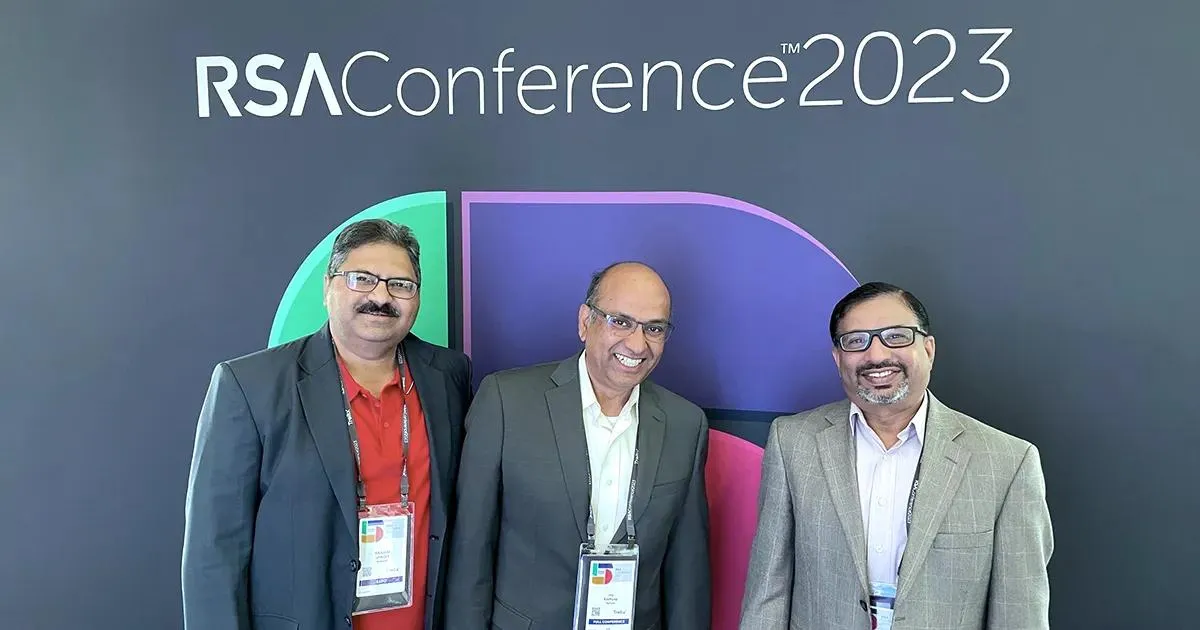
Blog
How to Build Security-First Architectures: A Step-by-Step Approach

Blog
How to Build Security-First Architectures: A Step-by-Step Approach




The emergence of a distributed multi-cloud environment and the hybrid work model are now major security challenges for CISOs. As attack surfaces increase, more companies are under constant threat of data breaches, ransomware attacks, and malware. A successful data breach or attack can make enterprises lose revenues and customer trust.
Cybersecurity managed services teams are realizing the importance of adopting a proactive (instead of reactive) approach to cyberattacks.
This is where a security-first architecture can make a difference. With this architecture, enterprises can build a secure infrastructure that detects and prevents threats.
How does the security-first architecture work? Let’s explore.
What is a security-first architecture?
A security-first architecture is a combination of IT systems, technologies, and policies used to protect business assets from cyberattacks. It’s a proactive approach to building security from the start, instead of responding to breaches after they occur.
With this architecture, organizations have the means to detect, prevent, and respond to a variety of threats. This architecture not only selects the appropriate security technology but also aligns with the company's security policies and guidelines. Effectively, a security-first architecture integrates three crucial elements in any company:
- People
- Processes
- Tools
For this architecture, organizations must embed security as a core element in every aspect of their business operations. This means examining and detecting gaps in the current processes, technologies, and business models. Once they have identified the gaps, they can build a security framework to mitigate the potential damage of a cyberattack.
To build an efficient, security-first architecture, companies can apply the following principles to any application:
1. Zero-trust Approach
The first principle is to implement a zero-trust approach to security. Zero Trust, as a strategy, regards everything internal or external to the network as a security risk. This applies to organizational data, devices, applications, and users. The next step is to embed a zero-trust approach into the core design of any product or service.
2. User Experience
Organizations implementing the zero-trust approach need to consider the following:
- How their product or services fit into their overall environment.
- The user experience includes the following:
o Target users
o The applications or systems they use
o The form of user access required to perform any task.
3. Security Protocols
Organizations cannot have a default configuration to implement a zero-trust defense against cyberattacks. They need a resilient system to monitor all communications, users, and system permissions. Through continuous monitoring and verification, they can develop security protocols, including the likes of:
- Multi-factor authentication
- Identity access management
- End-to-end data encryption
How to build a security-first architecture
Typically, organizations undergo the following four phases to build a security-first architecture:
- Phase 1: Performing a risk assessment of their existing system architecture.
- Phase 2: Implementing an efficient security architecture design and layout.
- Phase 3: Configuring and executing the security-related services and tools.
- Phase 4: Monitoring the security operations and processes for any threats or vulnerabilities.
Based on these 4 phases, organizations can build a security-first architecture in the following 5 steps:
1. Evaluate the existing system.
Before building any new architecture, companies must have complete knowledge of their existing assets, devices, users, and data. Additionally, they need to understand the security measures in place to reduce the risk of cyberattacks.
Through proper documentation, security teams can highlight the current state of cybersecurity to new members. With accurate information security analysis on the existing architecture (including the pros and cons), companies can prioritize the areas for improvement wherever needed. This is purely a "fact-finding" step that brings transparency to the entire process.
2. Create a threat model for cybersecurity.
Cybercriminals aim to identify every attack scenario or vulnerable area through cybersecurity threat modeling. The key is to keep it simple and evaluate the various attack vectors – and prioritize each one on a high, medium, or low scale.
Based on team discussions, security teams with an expertise in cybersecurity services can either upgrade (or downgrade) the possible impact. Depending on the current landscape, a threat model is both subjective and contextual – thus requiring continuous updates and changes.
3. Prioritize the opportunities.
The next step in building a security-first architecture is to document and prioritize the opportunities for security control and improvements. Based on their complexities, some of these opportunities are simple and fast to implement, while others may be complex and require longer implementation.
For the best results, prioritize each opportunity based on implementation time (short, medium, or long-term). Additionally, track each opportunity's business value and effort.
4. Execute the “quick” wins.
The next step is to execute “quick” wins by implementing the simplest opportunities. Consider implementing a spam filtering solution or conducting a security-related training session for every employee. This step is critical for gaining employee trust and support for executing more complex opportunities.
5. Design a long-term security roadmap.
After implementing some quick wins, it’s time for organizations to design a long-term security roadmap. This involves prioritizing high-value opportunities such as:
- Building a security operations center (SOC)
- Performing SOC Level 2 audits
- Implementing a data loss prevention process
For each opportunity, security teams must:
- Outline the business objective and desired output value
- Include sufficient buffers for project delays, cost escalation, and administrative tasks
Conclusion
To improve their security posture, modern companies need a more proactive approach to enterprise risk management. A security-first architecture is the optimal way to lower the risks of cyberattacks and data breaches.
At Xoriant, we enable our customers to adopt a proactive approach towards threat identification and remediation. We specialize in security services like:
- Zero trust security
- Security operations center
- Application and data security
If you are looking to revamp your existing security approach, we can assist you. Get in touch now.
Explore Related Offerings
Related Content




Get Started

 View Previous Blog
View Previous Blog




